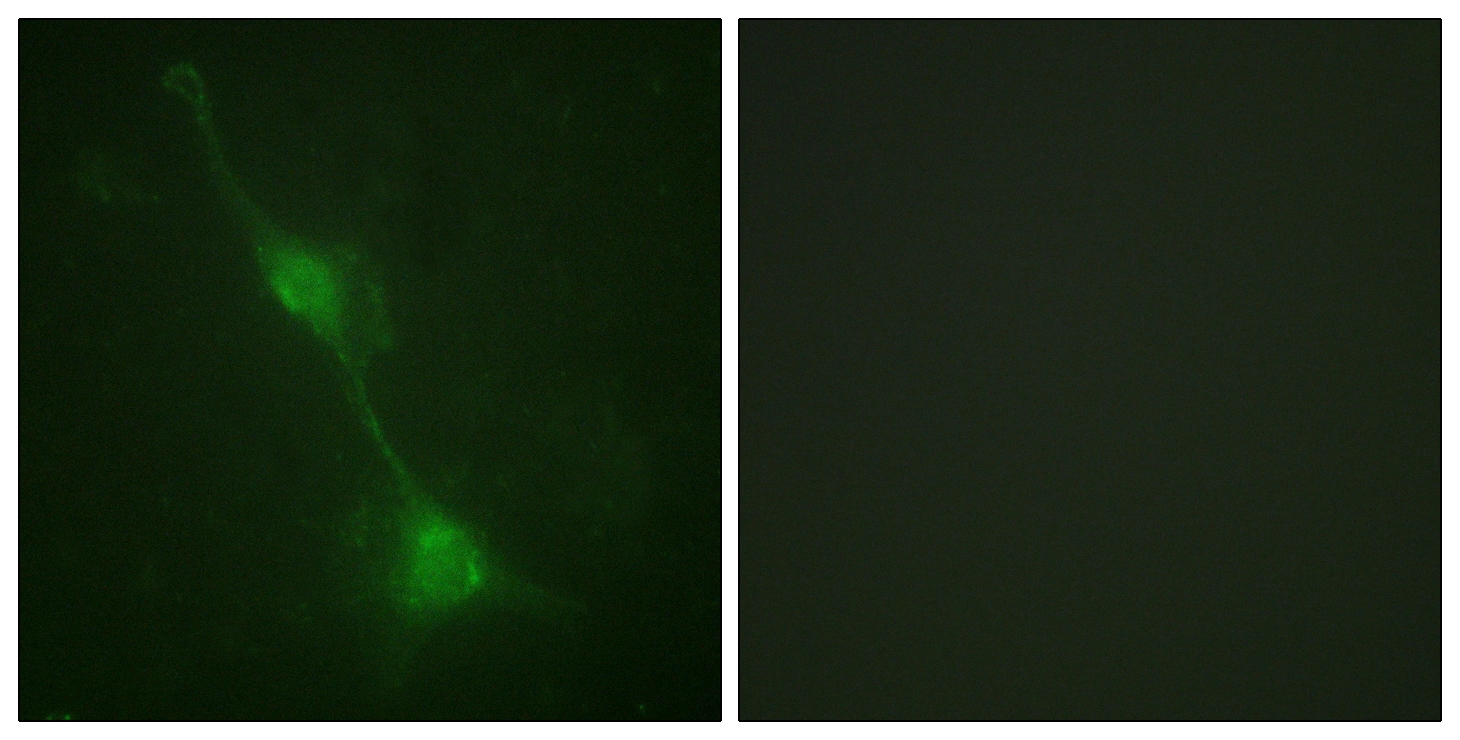
ICC/IF analysis of NIH3T3 cells using GTX87190 Ataxin 1 antibody. The picture on the right is blocked with the synthesized peptide.
Ataxin 1 antibody
GTX87190
ApplicationsImmunoFluorescence, ImmunoCytoChemistry, ImmunoHistoChemistry, ImmunoHistoChemistry Paraffin
Product group Antibodies
TargetATXN1
Overview
- SupplierGeneTex
- Product NameAtaxin 1 antibody
- Delivery Days Customer9
- Application Supplier NoteICC/IF: 1:100~1:500. IHC-P: 1:50~1:100. *Optimal dilutions/concentrations should be determined by the researcher.Not tested in other applications.
- ApplicationsImmunoFluorescence, ImmunoCytoChemistry, ImmunoHistoChemistry, ImmunoHistoChemistry Paraffin
- CertificationResearch Use Only
- ClonalityPolyclonal
- ConjugateUnconjugated
- Gene ID6310
- Target nameATXN1
- Target descriptionataxin 1
- Target synonymsATX1, D6S504E, SCA1, ataxin-1, alternative ataxin1, spinocerebellar ataxia type 1 protein
- HostRabbit
- IsotypeIgG
- Protein IDP54253
- Protein NameAtaxin-1
- Scientific DescriptionThe autosomal dominant cerebellar ataxias (ADCA) are a heterogeneous group of neurodegenerative disorders characterized by progressive degeneration of the cerebellum, brain stem and spinal cord. Clinically, ADCA has been divided into three groups: ADCA types I-III. ADCAI is genetically heterogeneous, with five genetic loci, designated spinocerebellar ataxia (SCA) 1, 2, 3, 4 and 6, being assigned to five different chromosomes. ADCAII, which always presents with retinal degeneration (SCA7), and ADCAIII often referred to as the pure cerebellar syndrome (SCA5), are most likely homogeneous disorders. Several SCA genes have been cloned and shown to contain CAG repeats in their coding regions. ADCA is caused by the expansion of the CAG repeats, producing an elongated polyglutamine tract in the corresponding protein. The expanded repeats are variable in size and unstable, usually increasing in size when transmitted to successive generations. The function of the ataxins is not known. This locus has been mapped to chromosome 6, and it has been determined that the diseased allele contains 41-81 CAG repeats, compared to 6-39 in the normal allele, and is associated with spinocerebellar ataxia type 1 (SCA1). At least two transcript variants encoding the same protein have been found for this gene. [provided by RefSeq, Jan 2010]
- Storage Instruction-20°C or -80°C,2°C to 8°C
- UNSPSC12352203

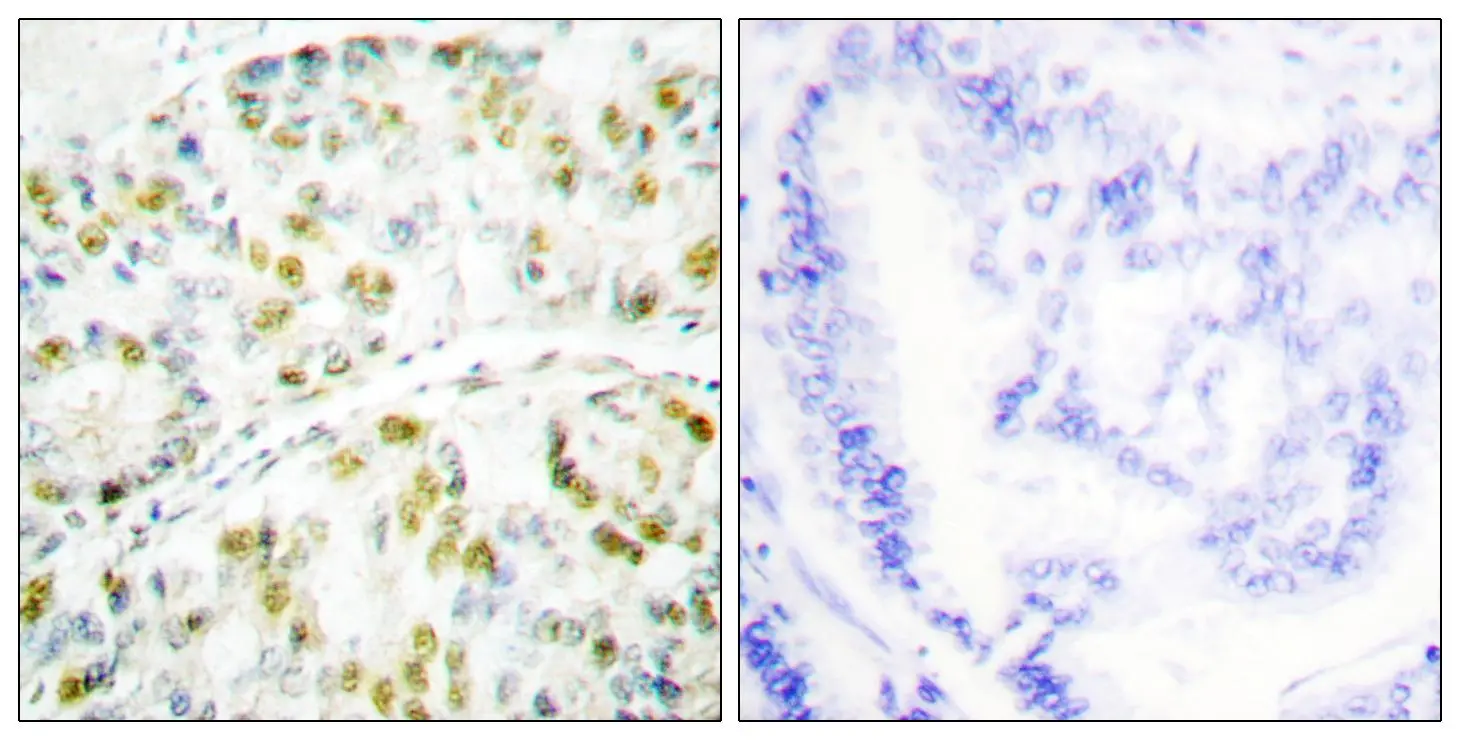
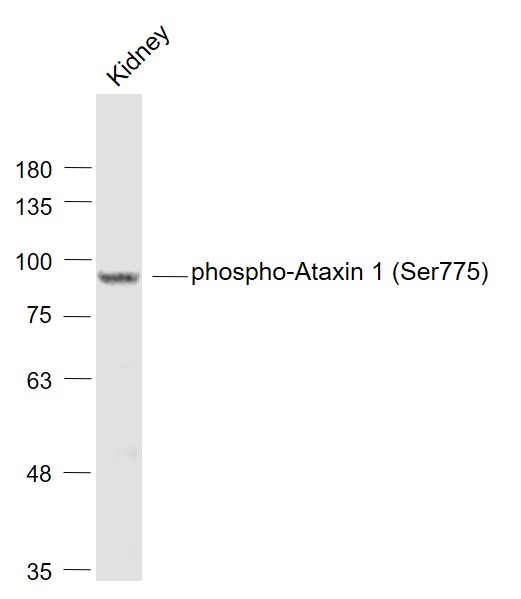

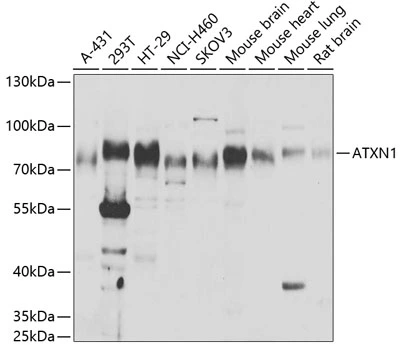
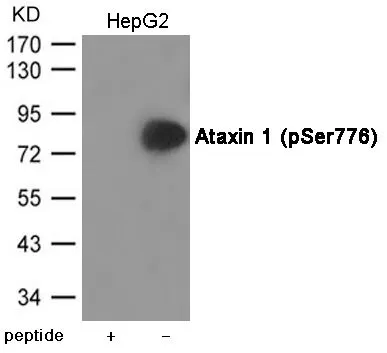
![FACS analysis of Jurkat cells using GTX80399 Ataxin 1 antibody [2F5]. Green : Ataxin 1 Purple : negative control](https://www.genetex.com/upload/website/prouct_img/normal/GTX80399/GTX80399_20170912_FACS_w_23061322_219.webp)

